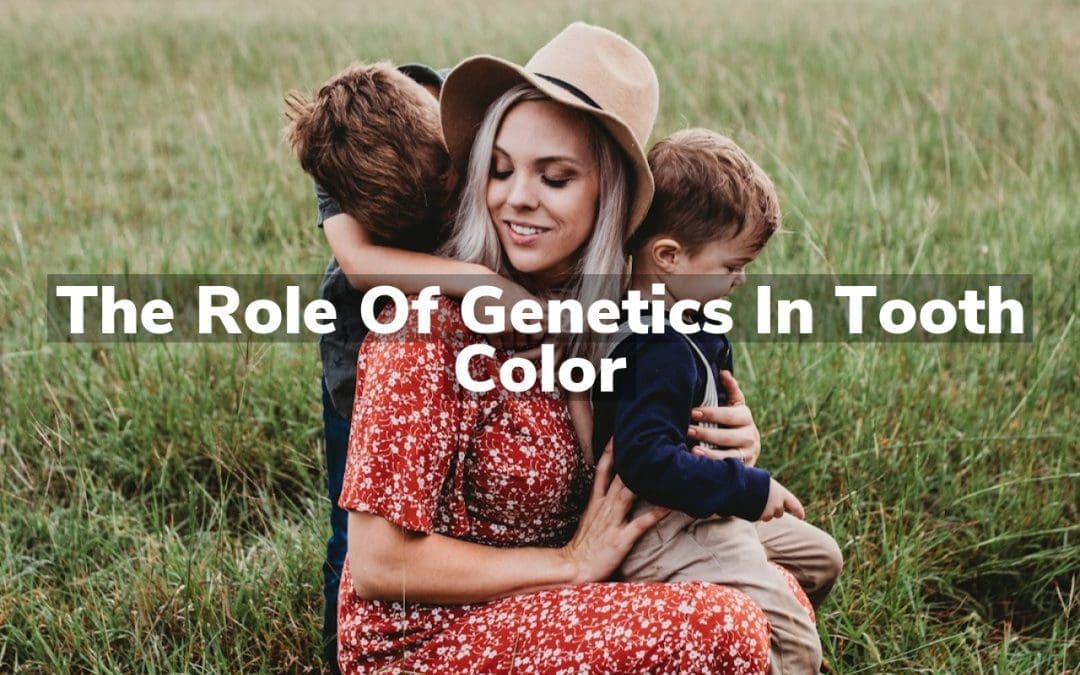Have you ever wondered why people have different tooth colors? Genetics play a crucial role in determining the natural shade of our teeth, with variations inherited from our parents influencing the spectrum of white to yellow tones we see. This genetic influence works alongside environmental factors, but it’s the foundation for our tooth color’s baseline.
Genetic Influence on Enamel Thickness
The color of our teeth is significantly influenced by genetics, particularly through the thickness and density of the dental enamel. Enamel, the outermost layer of our teeth, is naturally translucent. However, its thickness can vary from person to person due to genetic factors. Thicker enamel tends to hide the dentin, the layer beneath it that has a natural yellow hue, better than thinner enamel. Consequently, individuals with genetically thicker enamel may have teeth that appear whiter.
Moreover, genetics not only play a role in determining the thickness of the enamel but also influence its mineral composition, which can affect how our teeth respond to various external factors known to cause discoloration. Understanding these genetic influences can provide insight into why some individuals are more prone to tooth discoloration than others. For more information on what affects tooth coloration, consider reading What Causes Tooth Discoloration?. This knowledge underscores the importance of genetics in the natural coloration and appearance of our teeth.
Hereditary Factors in Tooth Discoloration
The color of one’s teeth is significantly influenced by genetics, making hereditary factors a pivotal aspect of tooth discoloration. Just as we inherit eye color or hair texture from our parents, the natural shade of our teeth, ranging from yellows to grays, is also passed down through generations. This genetic blueprint not only determines the initial color of our teeth but also affects the thickness and density of the enamel. Thicker enamel typically presents a whiter appearance, while thinner enamel may allow more of the dentin’s natural color to show through, contributing to a darker appearance.
Moreover, genetic predispositions can influence how susceptible an individual’s teeth are to staining from dietary and lifestyle habits. While external factors like coffee consumption or tobacco use undeniably play a role in tooth discoloration, the inherent resilience or vulnerability of one’s teeth to these external influences is largely determined by genetics. Understanding the role of heredity in tooth color underscores the importance of personalized dental care approaches. For those looking to enhance their smile in light of genetic factors, exploring professional teeth whitening services can be a step forward. Achieve a Brighter Smile in Colorado Springs.
Gene-Linked Variations in Tooth Shade
The color of our teeth is a fascinating interplay between genetics and environmental factors, with gene-linked variations playing a significant role. Just as our genes determine the color of our eyes and hair, they also influence the natural shade of our teeth. These genetic factors dictate the thickness and density of the enamel, as well as the underlying dentin, which collectively contribute to the overall appearance of our teeth. It’s interesting to note that these genetic influences mean that tooth color can vary widely among individuals, even within the same family. Understanding the role of genetics in tooth color not only sheds light on why we have the tooth shade we do but also emphasizes the uniqueness of our dental characteristics.
The Role of Ancestry in Dentin Color
Understanding the role of genetics in tooth color involves delving into how our ancestry influences dentin color. Dentin, the dense tissue forming the bulk of a tooth beneath the enamel, significantly impacts the overall color of our teeth. Research indicates that genetic variations inherited from our ancestors play a crucial role in determining the hue and brightness of our dentin. These genetic factors can explain why individuals from different ethnic backgrounds often exhibit varying tooth colors. This fascinating intersection of genetics and dental health underscores the importance of considering our genetic heritage when discussing tooth coloration. For those interested in exploring more about dental health and genetics, Colorado Springs Dentist at One Stop Dental offers insights into how these factors interplay.
Genetics vs. Environmental Impact on Teeth
When considering the factors that determine the color of our teeth, it’s essential to understand the roles played by genetics and environmental influences. Genetics provide the blueprint for our overall tooth color, laying the foundation for the hue and brightness of our smile from birth. This genetic influence is why tooth color can often run in families, with shades ranging from very white to more yellow or gray tones being passed down through generations. On the other hand, environmental factors can significantly alter or impact this genetic baseline. Lifestyle choices such as diet, smoking, and oral hygiene practices, along with exposure to certain medications or fluoride, can all contribute to changes in tooth color over time. While genetics sets the stage for our natural tooth color, environmental factors play a crucial role in maintaining or altering that color throughout our lives.
Conclusion
Understanding the role of genetics in tooth color can provide valuable insights into our dental health. For more information, call (719) 447-1199 or read reviews on Google Maps.


